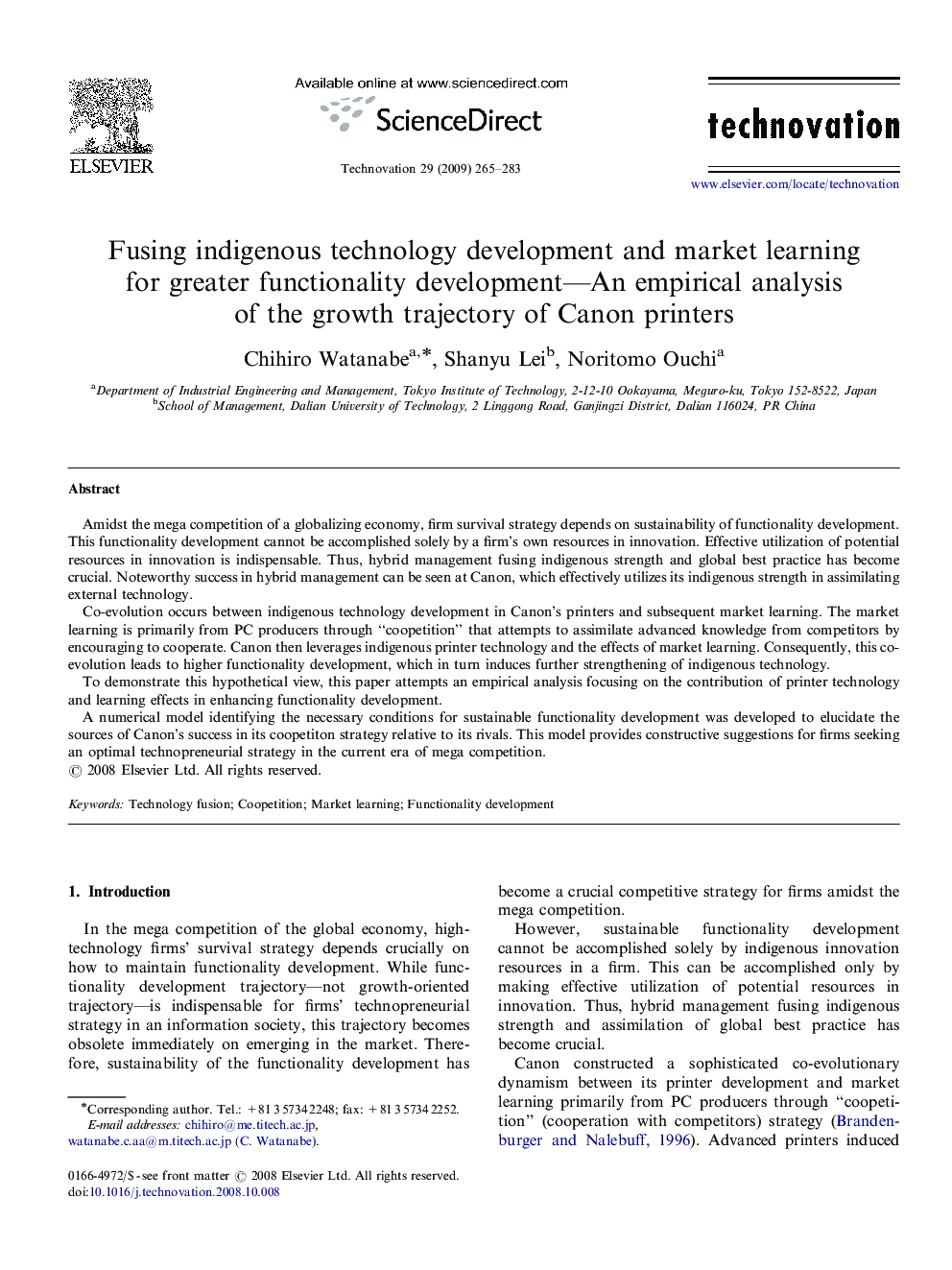| Article ID | Journal | Published Year | Pages | File Type |
|---|---|---|---|---|
| 1022240 | Technovation | 2009 | 19 Pages |
Amidst the mega competition of a globalizing economy, firm survival strategy depends on sustainability of functionality development. This functionality development cannot be accomplished solely by a firm's own resources in innovation. Effective utilization of potential resources in innovation is indispensable. Thus, hybrid management fusing indigenous strength and global best practice has become crucial. Noteworthy success in hybrid management can be seen at Canon, which effectively utilizes its indigenous strength in assimilating external technology.Co-evolution occurs between indigenous technology development in Canon's printers and subsequent market learning. The market learning is primarily from PC producers through “coopetition” that attempts to assimilate advanced knowledge from competitors by encouraging to cooperate. Canon then leverages indigenous printer technology and the effects of market learning. Consequently, this co-evolution leads to higher functionality development, which in turn induces further strengthening of indigenous technology.To demonstrate this hypothetical view, this paper attempts an empirical analysis focusing on the contribution of printer technology and learning effects in enhancing functionality development.A numerical model identifying the necessary conditions for sustainable functionality development was developed to elucidate the sources of Canon's success in its coopetiton strategy relative to its rivals. This model provides constructive suggestions for firms seeking an optimal technopreneurial strategy in the current era of mega competition.
